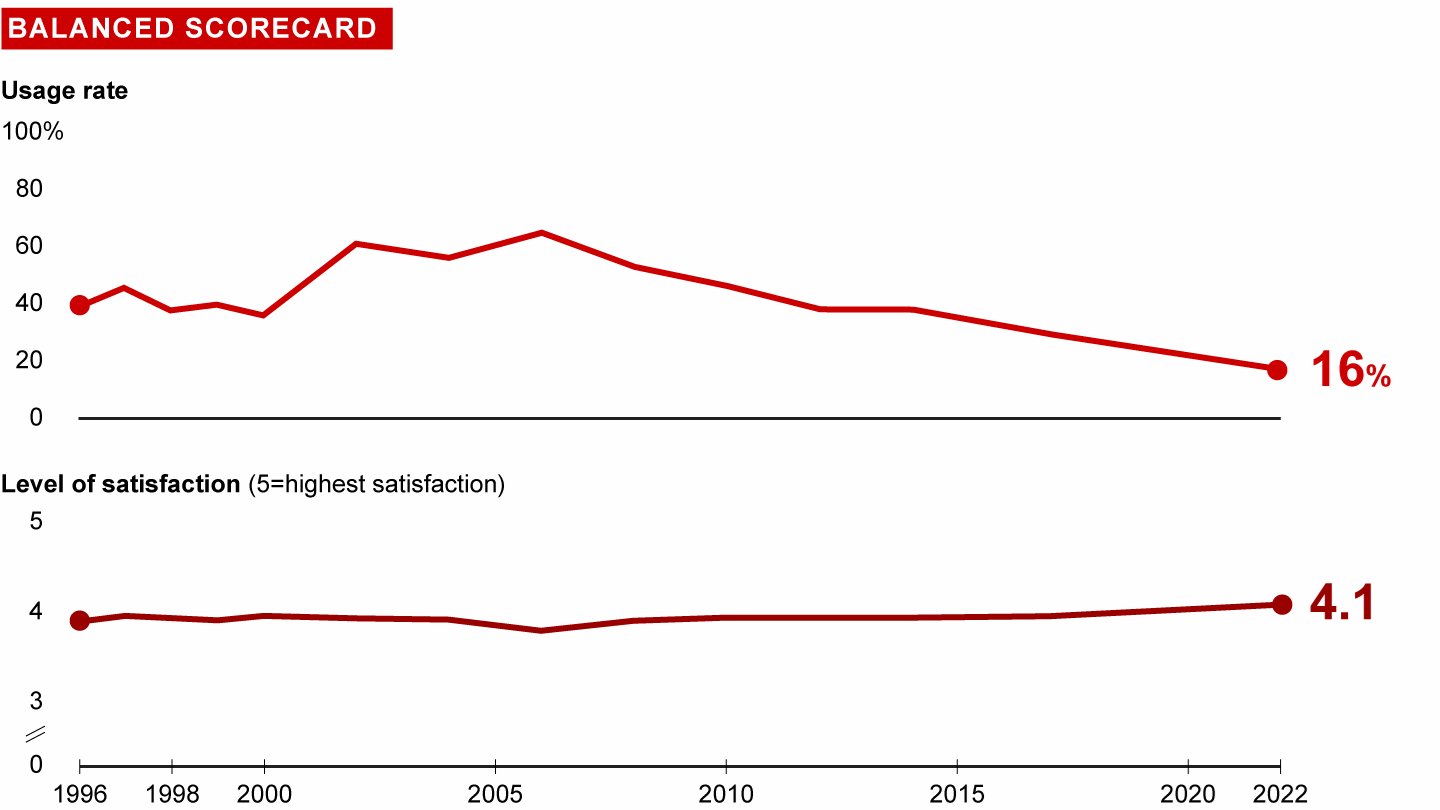Management Tools
What Is a Balanced Scorecard?
A Balanced Scorecard is a way to measure an organization’s performance and shows whether management is achieving desired results. The Balanced Scorecard translates purpose, mission, and vision statements into objectives and performance measures that can be quantified and appraised. These measures typically include the following categories of performance:
- Financial performance (revenue, earnings, return on capital, cash flow)
- Customer value performance (market share, customer satisfaction measures, customer loyalty)
- Internal business process performance (productivity rates, quality measures, timeliness)
- Innovation performance (percentage of revenue from new products, employee suggestions, rate of improvement index)
- Employee performance (morale, knowledge, turnover, use of best demonstrated practices)
- Environmental, social, and governance performance (greenhouse gas emissions, water consumption, employee diversity, health and safety incident rates, number of data breaches)
Usage and satisfaction among survey respondents


How Is a Balanced Scorecard Implemented?
To construct and implement a Balanced Scorecard, managers should:
- Articulate the business’s vision and strategy
- Identify the performance categories that best link the business’s vision and strategy to its results (such as financial performance, operations, innovation, and employee performance)
- Establish objectives that support the business’s vision and strategy
- Develop effective measures and meaningful standards, establishing both short-term milestones and long-term targets
- Ensure companywide acceptance of the measures
- Create appropriate budgeting, tracking, communication, and reward systems
- Collect and analyze performance data and compare actual results with desired performance
- Act to close unfavorable gaps
Related Topics
What Are the Common Uses of a Balanced Scorecard?
A Balanced Scorecard is used to:
- Clarify or update a business’s strategy
- Link strategic objectives to long-term targets and annual budgets
- Track the key elements of the business strategy
- Incorporate strategic objectives into resource allocation processes
- Facilitate organizational change
- Improve execution by coordinating interdependent groups
- Compare performances of geographically diverse business units
- Increase companywide understanding of the corporate purpose, vision, and strategy

Management Tools & Trends 2023
On the 30th anniversary of our survey, managers seem surprisingly upbeat.